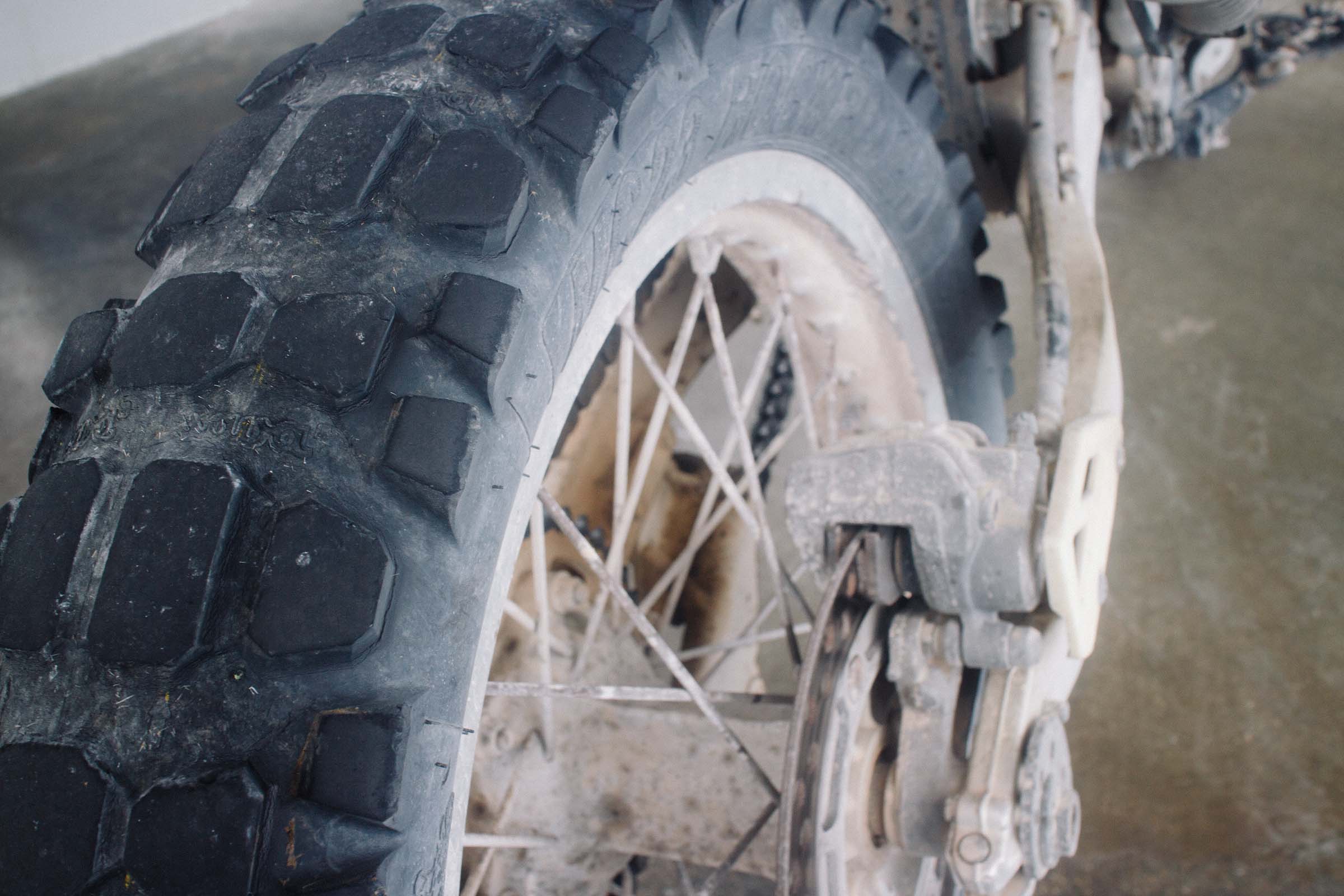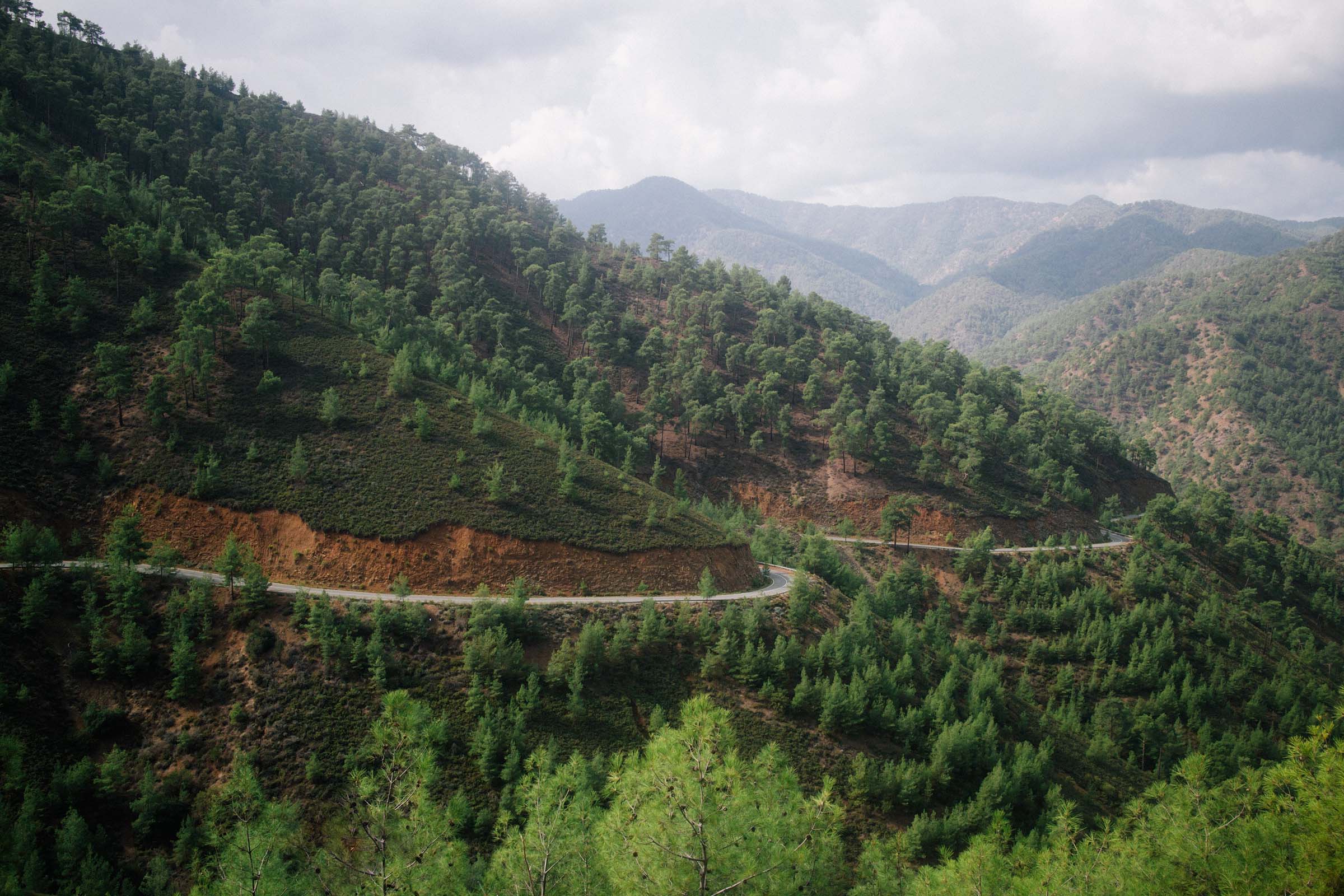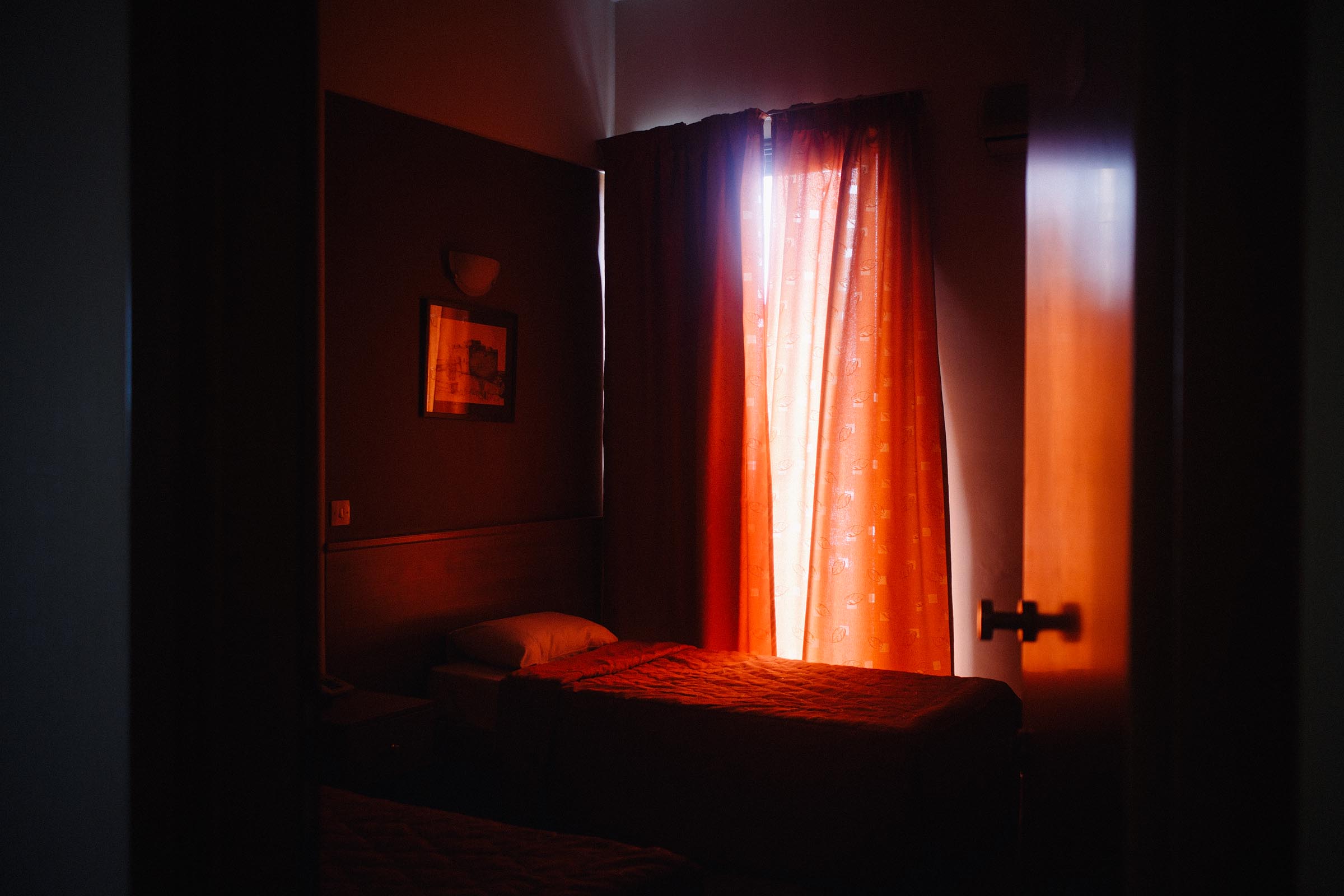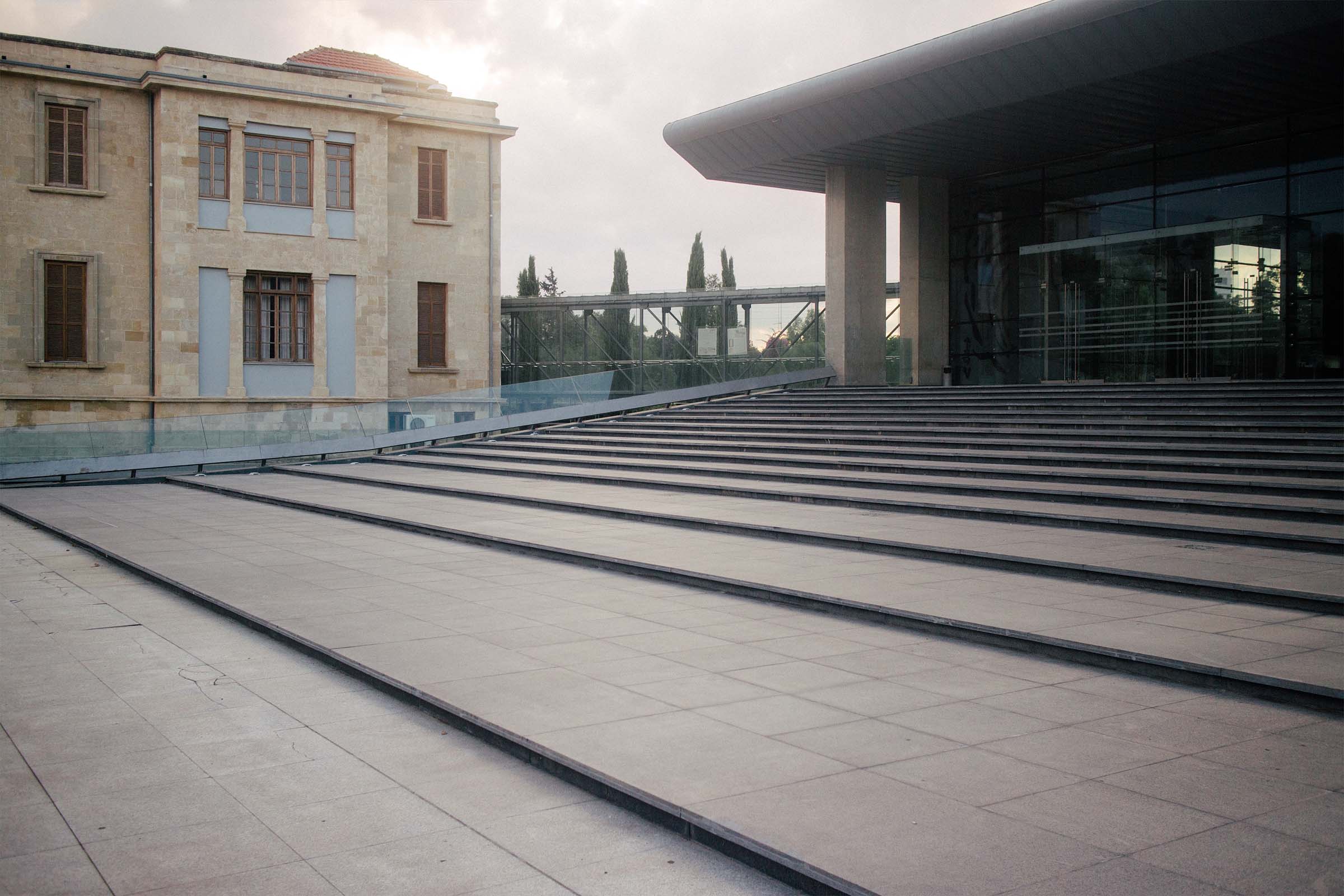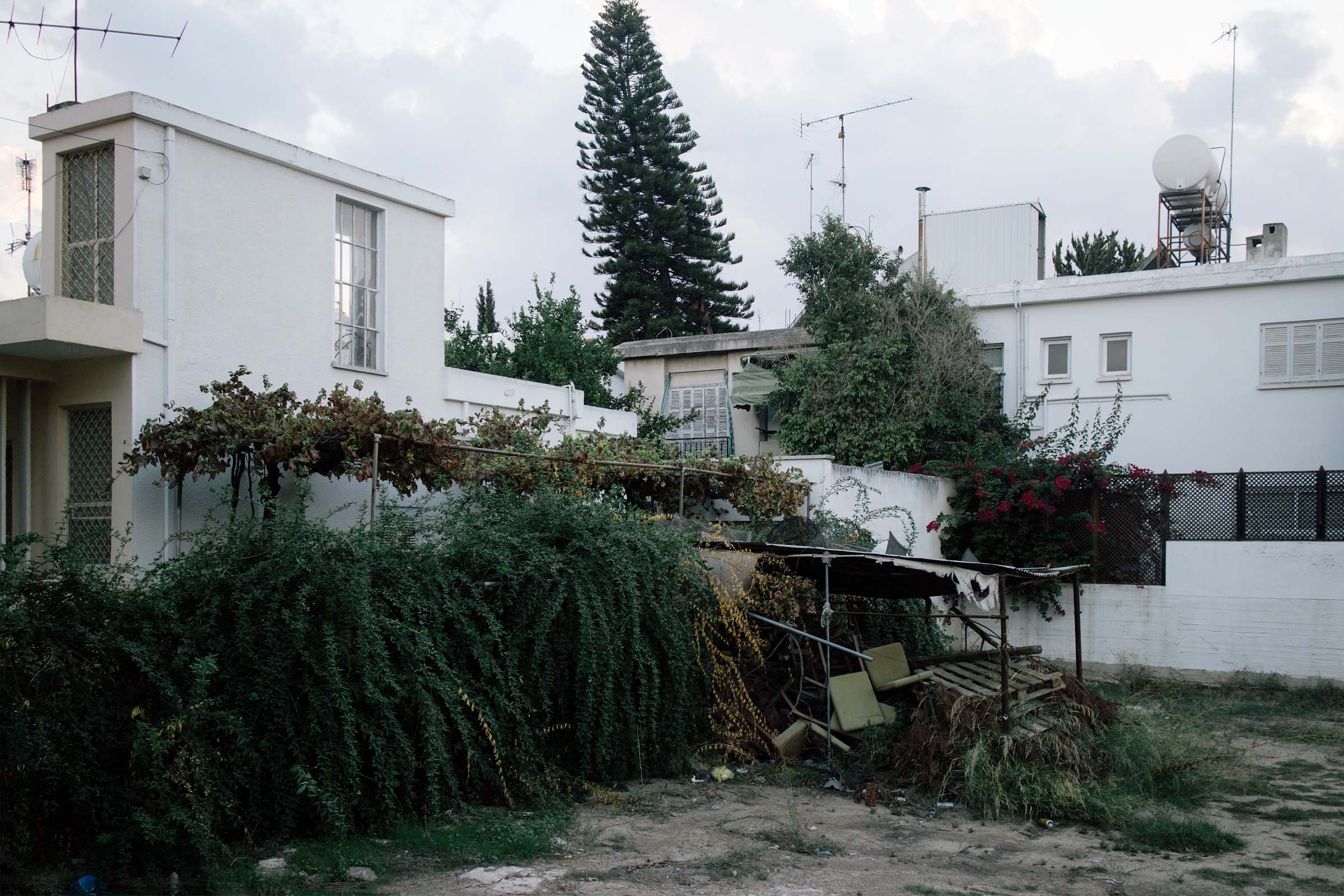The road out of Kato Pyrgos went into the mountains to avoid the occupied area. On it I met a group of three touring riders, the only others I’d seen on the whole trip. One of them spoke pretty good English. I told him that the road equalled any I’d ridden in the Alps. He translated what I’d said into Greek and his friend gave me an enthusiastic thumbs up.
I don’t think I was exaggerating, but I’ve only ridden the Alps on sports bikes. The DR350 is underpowered. It doesn’t appreciate any change of input once leaned over. This only made things more fun. I was confidently loading up the suspension into corners with the front brake and holding it there with the throttle until the exit. Or confidently enough to get to the edges of the no-name, almost-bald tyres anyway.
Riding into Nicosia wasn’t as hectic as I’d imagined. It’s about the size of Reading. I arrived at the hotel with the whole of the afternoon free to explore on foot.
It felt like a place where history had happened. The Turkish invasion and the present day are as far apart as World War II and the year I was born.
It’s still happening though. There’s a west/east Berlin-style checkpoint in the city centre. Yet a few doors down there are people sitting outside cafés with music playing. There are soldiers manning sandbagged positions with machine guns, alongside brand new houses with elaborately-shaped swimming pools and gated driveways. And at the bottom of the garden a North Korea/South Korea-style demilitarized zone.
In the suburbs the zone was a few hundred meters wide, barren and bulldozed. In the city centre it was only a block across. Other than the dilapidation and barbed wire it looked unchanged since the 1970s. It was a geological feature on a historical scale. A vein of time and space where people weren’t, consigned to the layers of history by mutual agreement. And all around the accrual and erosion of life went pleasantly on.
—

